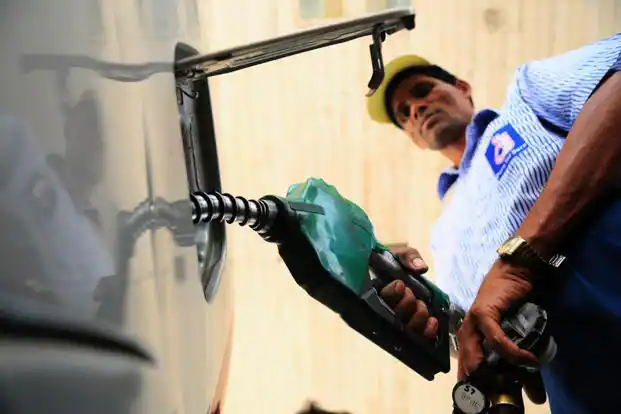The pursuit of sustainable energy solutions has led governments worldwide to explore alternative fuel sources that can reduce carbon emissions and dependence on fossil fuels. In this endeavor, ethanol fuel has emerged as a promising contender due to its renewable nature and potential for blending with gasoline. In alignment with these goals, the government’s target of achieving a 12% ethanol blending rate in fuel is making steady progress. Despite recent challenges, distilleries remain committed to maintaining the momentum and contributing to a greener energy landscape.

Read more.. Centre’s announcement, LPG gas cylinder prices cut by ₹200
Read more – The Ascent of Blockchain: Changing Enterprises Past Digital Currency
Ethanol Fuel Blending: A Path to Sustainability
Ethanol, a type of biofuel, is produced through the fermentation of organic materials such as corn, sugarcane, and wheat. Its environmentally friendly attributes, including lower greenhouse gas emissions and reduced air pollutants, make it an appealing choice for fuel blending. The process involves mixing ethanol with gasoline in varying proportions, thus creating ethanol-blended fuels that can be seamlessly used in existing combustion engines.

Read more.. Embrace Your Beauty: Fashionable Tips for Styling Plus-Size Women
Read more – The Ascent of Blockchain: Changing Enterprises Past Digital Currency
Government’s Ambitious Target
Governments across the globe have recognized the significance of reducing carbon emissions and are taking proactive measures to promote renewable fuels. In this context, the government’s target of achieving a 12% ethanol blending rate is a bold step toward energy sustainability. By blending ethanol into conventional gasoline, the carbon footprint of transportation can be substantially reduced, contributing to cleaner air quality and decreased reliance on non-renewable resources.
Overcoming Challenges
While the journey towards widespread ethanol adoption has been marked by notable achievements, challenges have also arisen along the way. One such challenge is the periodic fluctuations in ethanol prices due to various factors, including raw material availability, production costs, and market demand. Despite these hurdles, distilleries have consistently adapted to market dynamics and regulatory changes to ensure a continuous supply of ethanol for blending.
Sustaining Momentum Post Rate Hike
Recent rate hikes have added another layer of complexity to the ethanol blending landscape. However, distilleries are demonstrating resilience and determination to keep the momentum alive. They are investing in research and development to optimize production processes, exploring advanced technologies for ethanol extraction, and diversifying their feedstock sources to mitigate the impact of price fluctuations. This proactive approach underscores the industry’s commitment to achieving the government’s blending target and driving sustainable energy practices.
Innovation and Collaboration: Keys to Success
The journey to attain a 12% ethanol blending rate necessitates collaboration among various stakeholders. Governments, distilleries, research institutions, and automobile manufacturers must work hand in hand to ensure the seamless integration of ethanol-blended fuels into the existing infrastructure. Innovation remains pivotal in developing more efficient production methods, enhancing the quality of blended fuels, and addressing technical challenges related to engine compatibility and performance.
Conclusion
The trajectory of ethanol fuel blending is firmly on track to meet the government’s ambitious 12% target. Distilleries are weathering challenges and navigating through rate hikes with a determination to sustain the positive momentum. As the world shifts towards greener energy alternatives, ethanol’s role in reducing carbon emissions and fostering energy sustainability cannot be underestimated. With unwavering commitment and collaboration, the vision of a cleaner and more sustainable energy future can indeed be realized through ethanol fuel blending.




